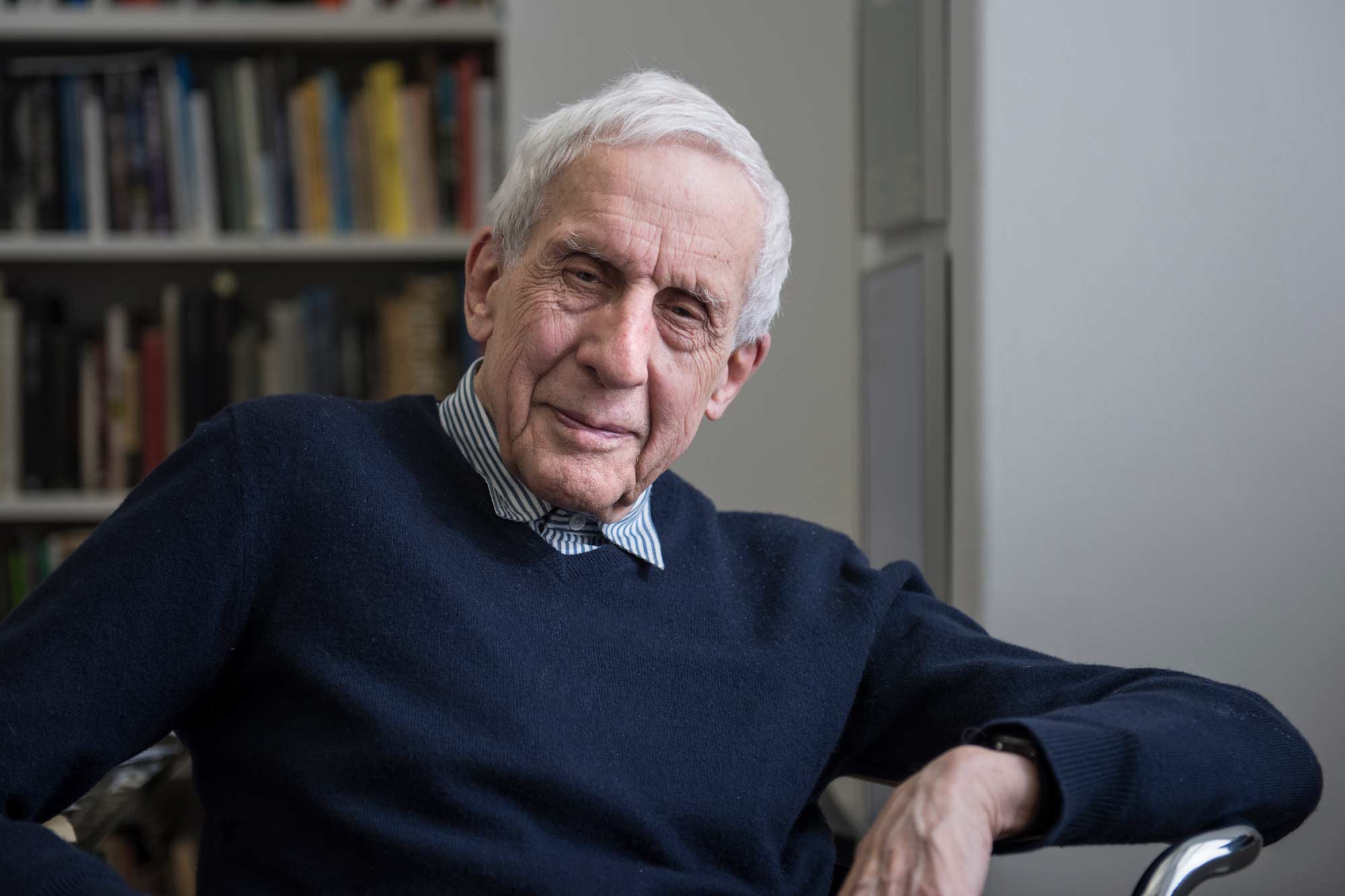Architect and historian Kenneth Frampton, the Emeritus Ware Professor of Architecture at Columbia University’s Graduate School of Architecture, Planning, and Preservation, has been named the 2022 recipient of the Thomas Jefferson Foundation Medal in Architecture.
The Thomas Jefferson Foundation Medals – sponsored jointly by the University of Virginia and the Thomas Jefferson Foundation, the nonprofit organization that owns and operates Monticello – are awarded each year to recognize the achievements of those who embrace endeavors in which Jefferson – author of the Declaration of Independence, third U.S. president and founder of the University of Virginia – excelled and held in high regard. The architecture medal and its counterparts in law and citizen leadership are UVA’s highest external honors.
Frampton joins a distinguished list of past recipients of the Thomas Jefferson Foundation Medal in Architecture, including Ludwig Mies van der Rohe, I.M. Pei, Frank Gehry, Toyo Ito, Zaha Hadid and Sir David Adjaye.
“It is an honor to recognize Kenneth Frampton for his seminal contributions as an architect and historian,” UVA School of Architecture Dean Malo A. Hutson said. “His writings, centering the importance of context, place and culture, have had a leading influence on the study and practice of architecture over many generations. His adherence to a humanistic philosophy, and architecture’s role of service to society and its capacity to enrich people’s lives, could not align better with our University’s and the School of Architecture’s public mission.”
Frampton will give a public talk to mark the occasion on April 13 at 4.30 p.m. in the School of Architecture’s Campbell Hall lecture hall. Seating is limited and an RSVP is required.
Further details about all Founder’s Day events can be found here.
Frampton was born in 1930 and trained as an architect in the Architectural Association School of Architecture in London. From 1959 to 1965, he was an associate of the architecture office of Douglas Stephen & Partners, one of the most progressive practices in London at the time. There, Frampton designed the notable project Corringham, a residential apartment complex in Central London. The building is one of the few post-war buildings to be listed on the National Heritage List for England, a unique register of the country’s most significant historic buildings and sites. It was identified as an “exceptionally important” structure and described by Historic England in its designation as “Douglas Stephen & Partners’ most coherent design of the period, and their most interesting.”
For three years in the early 1960s, Frampton worked as a technical editor for the magazine Architectural Design. In 1965, he moved to the United States to teach as a visiting professor at Princeton University, and since then, he has been active as a critic, historian and academic. Throughout his academic career, he has taught at numerous architecture schools, including the public research university of ETH Zurich, the Swiss Federal Institute of Technology in Lausanne, Switzerland; the Academy of Architecture in Mendrisio, Switzerland; and the Royal College of Art in London. For 48 years, from 1972 to 2020, he taught at Columbia University’s Graduate School of Architecture, Planning and Preservation, where he currently is the Emeritus Ware Professor of Architecture.










